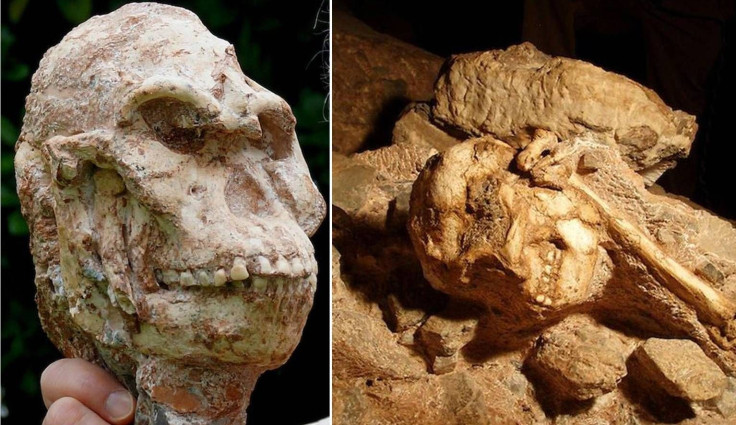Ancient ‘Little Foot’ Was 3.67 Million Years Old, Co-Existed With Lucy

Scientists have used new sophisticated instruments to determine that an ancient hominid skeleton named “Little Foot” is one of the oldest of its kind ever dated. The scientists also found that the pre-historic relative of modern-day humans co-existed with “Lucy,” a famous primordial human skeleton discovered in Ethiopia, suggesting that our ancestors may have had significant diversity covering certain parts of Africa.
Little Foot is a nearly complete skeleton of Australopithecus, an extinct genus of hominid, and was discovered 21 years ago in a cave at Sterkfontein in central South Africa. The latest finding suggests that the Little Foot skeleton was buried 3.67 million years ago, making it an older relative of Lucy, another Australopithecus skeleton, which is estimated to be 3.2 million years old, researchers said in a study, published in the journal Nature on Wednesday.
“The original date we published was considered to be too old, and it wasn't well received,” said Darryl Granger, a geochronologist at Purdue University in West Lafayette, Indiana and the study’s lead author, who had previously estimated the fossil to be 4 million years old. “However, dating the Little Foot fossil as 3.67 million years old actually falls within the margin of error we had for our original work. It turns out it was a good idea after all,” he said in the statement.
As part of the study, the scientists used a new dating technique that Granger developed by using a powerful detector originally intended to analyze solar wind samples from NASA's Genesis mission. The technique, called “isochron burial dating,” uses radioactive isotopes within several rock samples surrounding a fossil to date when the rocks and the fossil were first buried underground.
“We have only a small number of sites and we tend to base our evolutionary scenarios on the few fossils we have from those sites,” Ronald Clarke from the University of Witwatersrand in South Africa, who discovered the Little Foot skeleton, said in the statement. “This new date is a reminder that there could well have been many species of Australopithecus extending over a much wider area of Africa.”
Many scientists previously believed that Little Foot was a member of “Australopithecus africanus,” which had a rounder skull and smaller teeth than that of Lucy and other "Australopithecus afarensis." But, Clarke and other researchers suggest that Little Foot belonged to another Australopithecus species, known as “Australopithecus Prometheus,” which had a longer, flatter face and larger cheek teeth than “africanus.”
The researchers also found stone tools at a different area of the Sterkfontein cave. According to them, the tools were dated at 2.18 million years old, making them among the oldest known stone tools in South Africa.
“The most important implication from dating Little Foot is that we now know that australopithecines were in South Africa early in their evolution,” Granger told Live Science. “This implies an evolutionary connection between South Africa and East Africa prior to the age of Little Foot, and with enough time for the australopithecine species to diverge.”
© Copyright IBTimes 2024. All rights reserved.






















